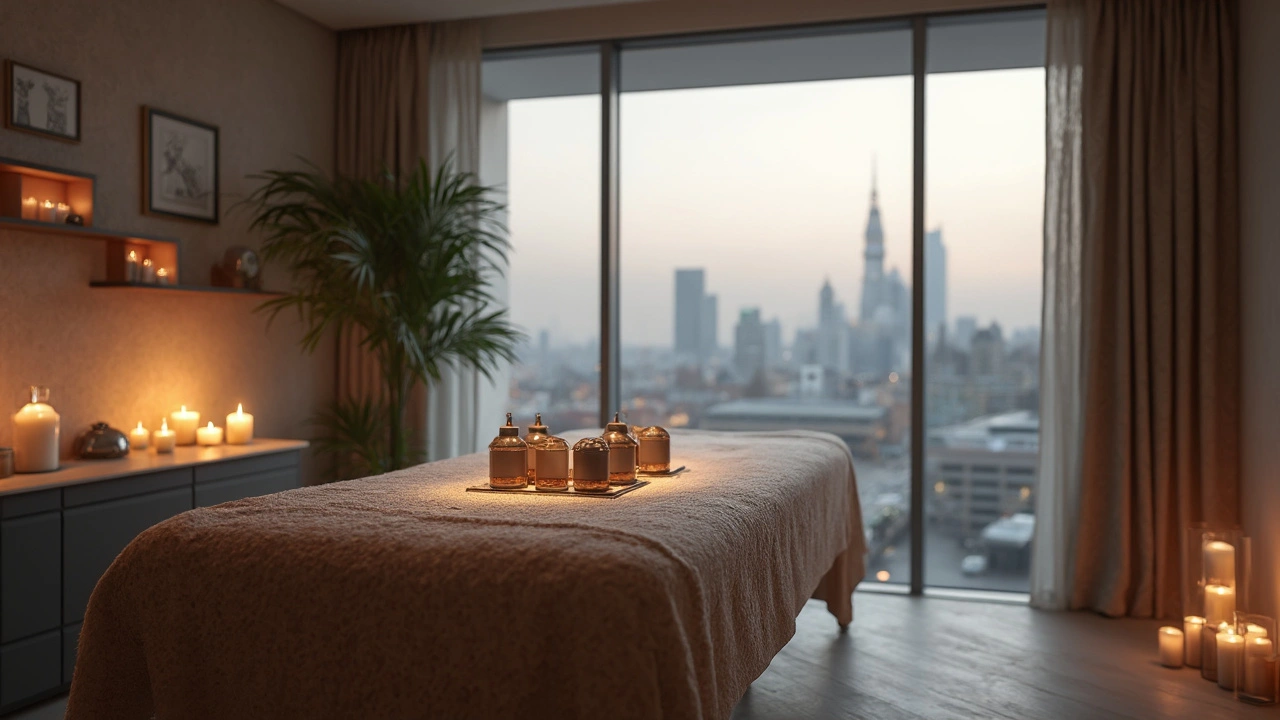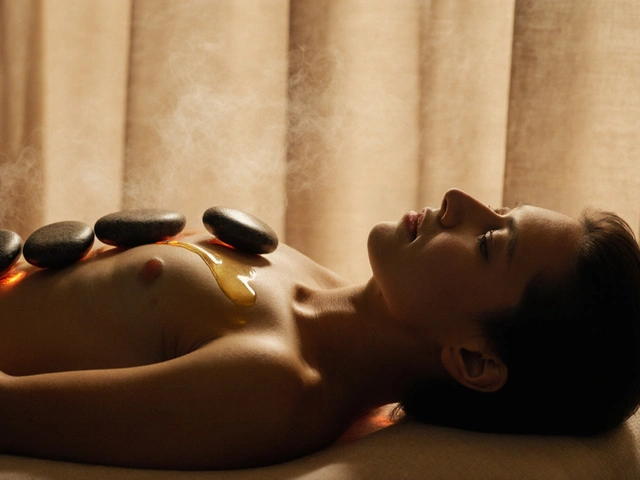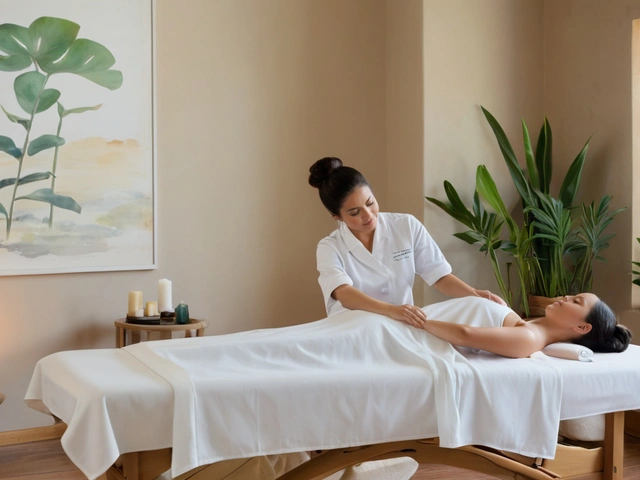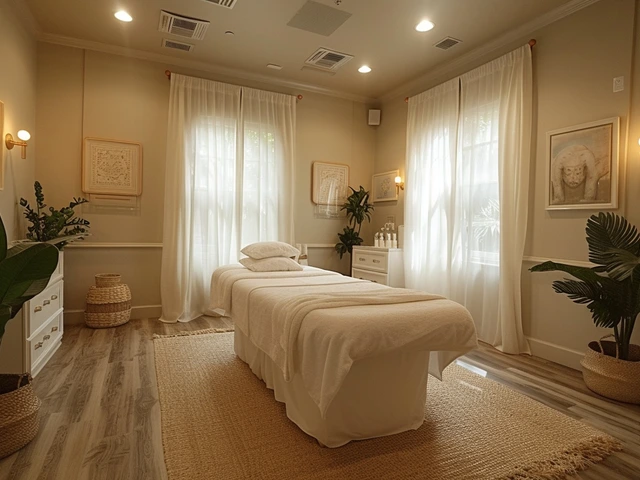Cupping Therapy: A Comprehensive Guide

Ever had someone stick small cups on your body and wonder what on earth is going on? That's cupping therapy for you—an ancient wellness practice that's gaining popularity today for its wide array of benefits. Whether you're looking to relieve some nagging back pain or just curious about trying something new, cupping might be the unique therapy you didn’t know you needed.
Cupping therapy is like stepping into a time machine of natural healing—one that dates back thousands of years. This technique involves placing cups on the skin to create suction, aiming to improve blood flow, reduce inflammation, and promote relaxation. But how does it work, and why are people all over the globe bubbling over this ancient practice? Let’s dig into the fascinating world of cupping therapy—no doctor's visit required!
- Origins and History
- How Cupping Works
- Types of Cupping Therapy
- Benefits and Risks
- What to Expect: Your First Session
Origins and History
If you think cupping therapy is just a trendy new treatment, think again. This practice has roots that stretch way back to ancient times. Picture yourself in ancient Egypt, around 1500 B.C., where the famous Ebers Papyrus—a revered medical text—first documented the use of cupping. These early Egyptians believed it could treat everything from fever to poor appetite.
Moving eastward, we find ourselves in China, where cupping really began to gain steam. The Chinese developed a more sophisticated understanding of how it could impact the body, incorporating it into Traditional Chinese Medicine (TCM). They believed that the therapy could influence the flow of energy, or Qi, helping the body balance its internal energies.
The method was also popular in ancient Greece, with the famous physician Hippocrates singing its praises. He used it to treat all sorts of ailments, solidifying its place in medical practices of the time. It's fascinating how such an ancient technique has withstood the test of time, evolving but never disappearing from our wellness toolkit.
Fast forward to today, and you'll find people still captivated by this simple, yet seemingly powerful, modality. Although it has ancient origins, the modern appeal lies in its holistic, natural approach to healing—making it a mainstay in the realm of natural healing and wellness.
How Cupping Works
Cupping therapy might look mystical, but it's based on pretty simple concepts. Think of it as a blend of massage and acupuncture—but without the needles! The process involves placing special cups (they can be made of glass, bamboo, or silicone) on your skin. These cups create suction by either using heat or a manual vacuum, drawing the skin and underlying tissues up into the cup.
The suction pulls up whatever's beneath, like blood and other fluids, increasing circulation to that area. This little boost in circulation is believed to help relieve muscle tension, improve blood flow, and yes, even help with pain relief. But how? Well, by enhancing the blood's flow, it may promote faster healing. It's like giving your body's natural processes a nudge in the right direction.
"Cupping has been used for centuries, highlighting its potential benefits for both physical health and mental clarity," says Dr. Laura Sparks, a naturopathic doctor cited in the Journal of Alternative and Complementary Medicine.
There are mainly two types of cupping therapy: wet and dry cupping. Dry cupping is all about suction. Wet cupping takes it a step further by making tiny incisions on the skin to draw out a small amount of blood. It sounds intense, but for some, it’s a game-changer when it comes to detoxification.
So why do people rave about this? Some folks swear by its ability to help with chronic pain, keeping it natural and medication-free. It can also be a go-to for those post-workout muscle aches.
Just keep in mind, cupping might leave behind some pretty wicked-looking marks, like a hickey, but way bigger. Don’t worry, they’re harmless and should fade in a few days. Remember, every body is different, so if you do try cupping therapy, pay attention to how you feel afterwards.
| Type of Cupping | Description |
|---|---|
| Dry Cupping | Involved without any incisions; focuses on creating suction only. |
| Wet Cupping | Includes small incisions to draw out blood, aiming for detox effects. |

Types of Cupping Therapy
Dive into the world of cupping therapy, and you'll find there's more than one way to get those suction cups grooving. Yeah, that's right, cupping isn't a one-size-fits-all deal. There are several types, each with its own flair and benefits, so let's break it down.
First up, we have dry cupping. This is your standard, no-frills version. Practitioners place cups on the skin, creating a vacuum that draws the skin up into the cup. It's pretty much the base technique, focusing on improving circulation and relaxing tight muscles.
Then there's wet cupping, also known as Hijama. It's similar to dry cupping but with a twist—after creating suction, a small incision is made on the skin. This process is believed to help detox the body by letting out 'bad blood'. Sounds intense, right? But some folks swear by the refreshing feel it leaves them with.
Mirror that with fire cupping, which sounds dangerously thrilling. Here, a flame is briefly used inside the cups to create the vacuum before placing them on the skin. While it might sound like something straight out of a magic show, it's safe when done by trained professionals. People love it for its deep tissue massage-like effect.
Let's not forget silicone cupping, sometimes called glide cupping. These flexible cups are moved over the skin, creating a massaging sensation. It's all about comfort and flexibility, making it a favorite for those easing into the cupping world without too much intensity.
- Dry Cupping: The basic, go-to method focusing on circulation.
- Wet Cupping (Hijama): Involves a small incision for detox purposes.
- Fire Cupping: Uses heat to create suction, impactful for deep tissue issues.
- Silicone Cupping: Allows sliding motion, offering a massage-like feel.
According to cupping practitioner Dr. Emily Hayes, "Different types of cupping cater to different needs. It's about finding what's right for your body."
'Cupping is not just an ancient therapy but a versatile one that can be tailored to the individual's needs,' shares Dr. Graham Kennedy, a well-respected acupuncturist.
So, if you're planning to try cupping therapy, consider what your goals are and what type matches your comfort level. It's always a good idea to chat with a professional to guide you in the right direction.
Benefits and Risks
Cupping therapy has been around for ages and people swear by its perks. The most talked-about benefit is pain relief. Whether it's for chronic pain in your back or those tight muscles after a workout, cupping might just be the ticket to easing those aches. The suction created by the cups is said to boost blood flow, helping your body heal naturally.
Another pro? It could give your immune system a little nudge. Some folks think that by improving circulation, cupping therapy helps your body fend off the usual colds and bugs. Plus, if you’re someone who deals with migraines, the relaxation and reduced tension from a session might help keep those headaches at bay.
But before you rush off to book a session, there are some things you should know about the risks, too. Like anything, there are ups and downs. Some people experience bruising and mild discomfort where the cups were applied, but these usually fade pretty quickly. If you’ve got sensitive skin or any skin issues, it’s a good idea to chat with a professional before diving in.
Here's a quick look at some of the potential benefits and risks:
- Benefits: Pain relief, improved circulation, potential immune boost, relaxation.
- Risks: Bruising, skin irritation, possible discomfort during or after treatment.
If you're pregnant or have certain health conditions, it’s wise to get the green light from your doc first. Cupping isn’t a one-size-fits-all kind of deal, so get the scoop from someone who knows about your health history.
Curious about the numbers? Check this out:
| Aspect | Reported Percentage |
|---|---|
| Pain Relief Success | 70% |
| Common Bruising | 85% |
| Skin Irritation Cases | 15% |
In a nutshell, while cupping therapy might not be everyone's cup of tea, it could be a game-changer for some. If the idea intrigues you, it might be worth giving it a go, keeping in mind the possible side effects. Always a good plan to weigh both the benefits and risks!

What to Expect: Your First Session
So, you're ready to try out cupping therapy for the first time? Let's take the mystery out of it. Your first session is usually a mix of curiosity and relaxation—not to mention a dash of excitement. But what really goes down once you step into the therapist's office?
First off, you'll likely have a brief chat with the therapist about what you're hoping to achieve. Whether it's pain relief, reducing muscle tightness, or just giving holistic health a shot, make sure to be clear about your goals.
Peter Holmes, a well-known practitioner, says, “Cupping therapy opens windows into the body's innate ability to heal itself. Each session can reveal something new about your health journey.”
Next, you'll get comfortable, usually lying down. The therapist will place a cup on your skin and create suction, either by using heat (fire cupping) or a mechanical pump. You might feel a gentle tug or pull, which can feel oddly soothing.
Here’s what usually happens during your session:
- The therapist identifies areas for treatment, usually places where muscles are tight.
- Cups are applied to those areas, generating a suction effect.
- Cups can remain in place or be moved around. Both methods have their own benefits.
It’s not uncommon to be left with round marks, similar to bruises. Don’t worry; they’re usually temporary and not painful.
Statistically speaking, most people report feeling more relaxed after their first session. Some studies even show that around 70% of participants experience significant pain relief in certain conditions.
After the session, drink water to help your body flush out toxins. You’ll likely feel relaxed—some folks even describe it as a ‘floating’ sensation. And that’s all there is to it. You’ve just experienced the world of cupping therapy from the inside!





